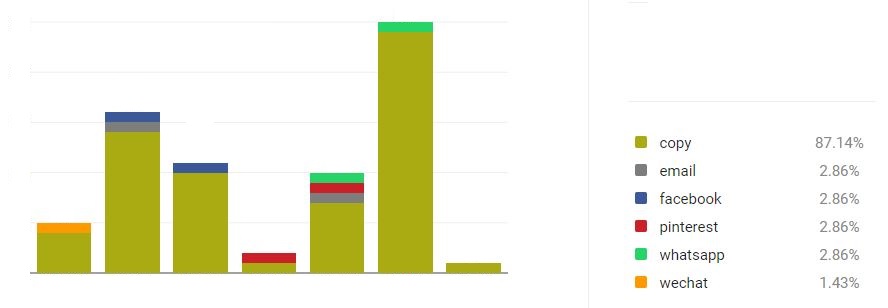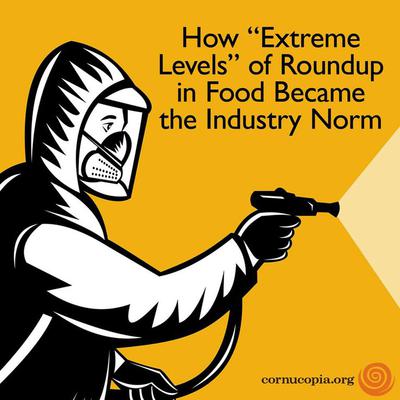|
|
www.moyoway.com |
Buy your Certified Organic |
|
|
CLICK FOR NAKED www.moyoway.com |
Moyo is an African origin word which implies that the
"heart and mind act as one to cultivate the spirit”
Glyphosate is Highest in Grains, Beans, Cereals and Seeds
by Jim
Pesticide residues in our food is not always determined by the ultimate concern, safety for humans and the rest of the world.
Sometimes, the ultimate concern is farming practice, such as desiccation - the process of spraying the crop with a herbicide, such as Roundup's Glyphosate, to dry it out sufficiently to meet the maximum (or less) moisture content for harvesting. Harvesting generally commences when the crop "flashes" - sort of like wilting.
Most of the world follows (or uses as a guide) the Codex Alimentarius, created by the United Nation's FAO and WHO departments, to determine that maximum residual levels of herbicides in the food that we eat.
Here is the list for glyphosate, which is the active ingredient in Monsanto's Roundup product.
Pesticide Residues in Food and Feed - Codex Alimentarius
Chemical - Glyphosate
Functional Class - Herbicide
Maximum Residue Limits for Glyphosate
- Alfalfa fodder - 500 mg/Kg
- Pea hay or pea fodder (dry) - 500 mg/Kg
- Hay or fodder (dry) of grasses - 500 mg/Kg
- Barley straw and fodder, Dry - 400 mg/Kg
- Wheat straw and fodder, Dry - 300 mg/Kg
- Bean fodder - 200 mg/Kg
- Maize fodder (dry) - 150 mg/Kg
- Oat straw and fodder, Dry - 100 mg/Kg
- Sorghum straw and fodder, Dry - 50 mg/Kg
- Cotton seed - 40 mg/Kg
- Cereal grains - 30 mg/Kg (Except maize and rice)
- Rape seed - 20 mg/Kg
- Wheat bran, Unprocessed - 20 mg/Kg
- Soya bean (dry) - 20 mg/Kg
- Sugar beet - 15 mg/Kg
- Sugar cane molasses - 10 mg/Kg
- Sunflower seed - 7 mg/Kg
- Maize - 5 mg/Kg
- Peas (dry) - 5 mg/Kg
- Edible offal (mammalian) - 5 mg/Kg (Except pigs)
- Lentil (dry) - 5 mg/Kg
- Sweet corn (corn-on-the-cob) - 3 mg/Kg
- Beans (dry) - 2 mg/Kg
- Sugar cane - 2 mg/Kg
- Poultry, Edible offal of - 0.5 mg/Kg
- Pig, Edible offal of - 0.5 mg/Kg
- Poultry meat - 0.05 mg/Kg
- Milks - 0.05 mg/Kg
- Eggs - 0.05 mg/Kg
- Meat (from mammals other than marine mammals) - 0.05 mg/Kg
- Banana - 0.05 mg/Kg
Don't forget that glyphosate is not the only chemical in Roundup that we need to worry about.
Glyphosate is only about 40% of the average Roundup recipe (there are different strengths/concentrations). The other 60% is made up of adjuvants (solvents, stabilisers, preservatives, delivery chemicals, etc).
We have no idea what this 60% does to us and the planet because it does not have to be tested for direct or indirect effects, such as weakened immunities. Keep in mind that it is not unusual for the toxicity of an active ingredient, like glyphosate in Roundup, to be increased in the presence of adjuvants.
Here is a recent article from Organic Consumers Association that say the following, according to the US Environmental Protection Agency (EPA):
- 60 percent of herbicides
- 90 percent of fungicides
- 30 percent of insecticides
are also, in addition to being toxic, carcinogenic and according to the agency’s latest report, more than half of all foods tested last year had detectable levels of pesticide residues on them.
In the same article they say they don't test for glyphosate because it would be ‘extremely expensive... to do on an regular basis’
If you're lucky enough to be reading this article, or you already know this information, it makes a lot of sense, for the sake of your health, to minimise any biocide residue in your food.
If certified organic is too expensive or unavailable in your area, then try to eat foods that appear at the bottom of this list - at least you'll be able to keep your herbicide consumption to a minimum while you think of another plan.





